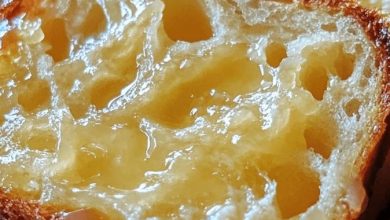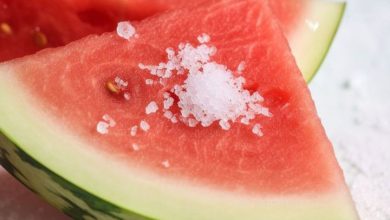Should You Be Adding Salt To Your Coffee?

A harsh, overly bitter cup of coffee can quickly put a damper on your morning. We’ve all been there: whether the beans were over-roasted, the brewing time was a bit too long, or maybe you simply don’t enjoy that sharp, cutting flavor. Instead of pouring that cup down the drain, there is an incredibly simple, generations-old trick you might be overlooking: adding a tiny pinch of salt to your coffee.
ADVERTISEMENT
It might seem totally strange, but adding salt to coffee has been used by people for a long time to smooth out bitter tastes and make the coffee’s natural sweetness shine. It’s a trick that even famous cooking experts swear by for better flavor.
ADVERTISEMENT
We will try to explain the science of why this works, show you the right amount of salt to use, and give you the best ways to make your coffee taste amazing with just a small sprinkle.
ADVERTISEMENT
Why Does Coffee Taste Bitter in the First Place?
Bitterness in your daily brew comes from two main places: the coffee beans themselves and the way you make the coffee (the brewing process).
Inside every bean are natural acids and compounds. When the beans are roasted, these can develop a sharp flavor. The darker the roast is, the stronger these bitter notes often become. But a small amount of salt can help bring these flavors into balance.
The way you grind your coffee also matters a lot. If the coffee grounds are too fine, the water pulls out harsh flavors too quickly—this is called “over-extraction.” Brewing the coffee for too long does the same thing, which increases the bitterness of coffee. Even the water you use plays a role; if it is too hot, it can “scorch” the coffee grounds and make the bitterness much worse.
It is important to remember that not all bitterness is bad. Many coffee fans actually enjoy a little “bite,” especially in a strong cup of espresso. However, when the bitterness is too strong and covers up the more delicate flavors, it completely spoils the drink.
This is exactly where the salt steps in to save the day.
The Science: Why Put Salt in Coffee?
The idea of adding salt to your coffee is not just a passing trend; it is supported by real food science.
The sodium found in salt works directly against the taste receptors on your tongue that are meant to pick up bitter flavors. At the same time, it makes your brain notice the sweetness and brings out subtle, lovely flavors you might otherwise miss.
This same principle is what makes things like famous salted caramel so incredibly popular and tasty. Salt has the power to enhance, balance, and soften strong flavors. Coffee reacts in exactly the same way.
So, when you put salt in your coffee, you are not trying to cover up a bad taste. Instead, you are changing the way your mouth and brain experience the coffee’s flavor.
How Much Salt Should You Add to Coffee?
The most important rule here is moderation. If you add too much salt, you will certainly ruin the whole cup. If you add too little, you won’t notice any positive difference.
A great place to begin is with a simple pinch, which is about 1/8 of a teaspoon for a standard mug or cup of coffee.
- For a large pot of drip coffee or a French press, you can add this small amount directly to the dry grounds before you start brewing.
- For a single shot of espresso or a quick cup of instant coffee, just sprinkle the pinch into your mug and then stir it in well.
If you are not sure, start with a tiny amount—even just a few grains of salt. You can always add a little more, but once the coffee is too salty, there is no way to save it. Think of it just like seasoning any food: you are aiming to create balance, not actually taste the salt itself.
The Right Choice: Best Types of Salt for Coffee
Believe it or not, not all salts taste the same, and the type you select can slightly change the final flavor of your coffee. Some salts give a very clean taste, while others might add a mild mineral flavor.
Here is a quick look at the popular choices:
- Table salt: This is the most straightforward option, but the iodine and additives in it can sometimes leave a very slight chemical trace taste.
- Sea salt: This tends to have a cleaner flavor and a smoother, more rounded taste.
- Kosher salt: It is mild, dissolves very evenly, and is easy to measure by hand with a simple pinch.
- Himalayan pink salt: This option adds a subtle, earthy taste that goes particularly well with darker roasted coffee beans.
For daily brewing, many people, including expert coffee drinkers, prefer to use sea salt or kosher salt. They blend smoothly with the coffee and won’t overpower the natural flavor of coffee.
A Global Idea: Salt in Coffee Around the World
Adding salt to coffee is not a trendy new invention. It has been a tradition around the world for many years.
- In Turkey, there is a fun tradition where a bride-to-be will serve salted coffee to her fiancé as a lighthearted way to test his patience and character.
- In parts of Scandinavia, coastal sailors famously used to brew their coffee with the local brackish (slightly salty) water, and that taste eventually became a normal part of the local coffee culture.
- Even today, certain families in Northern Europe enjoy their morning coffee with a small pinch of salt.
- In countries like Hungary and Siberia, salted coffee is also seen as a warm and comforting drink during the colder months.
So, the next time you decide to add salt to your mug, remember that you are not just trying something experimental. You are actually tapping into a truly global and historical coffee tradition!
The Best Way to Add Salt to Your Coffee
You have a couple of simple ways to start using this flavor trick:
- The Quick Fix: The easiest way is to simply stir a pinch of salt directly into your brewed coffee. This method works perfectly if you are making instant coffee, an espresso, or if you just need to quickly fix a cup that tastes too bitter.
- The Smooth Blend: The other, and often better, method is to add the salt to your dry coffee grounds before you start the brewing process. This helps the flavor distribute more evenly throughout the entire batch. This works great for automatic drip machines, the French press, or a cold brew setup.
If you are making cold brew, adding salt to the grounds before they steep is especially effective. Cold brew coffee is already famous for being smooth and low in acid, and a pinch of salt can make it even better, perfectly rounding out any lingering harshness.
Give this simple tip a try—it might just be the secret ingredient your morning coffee has been missing!




